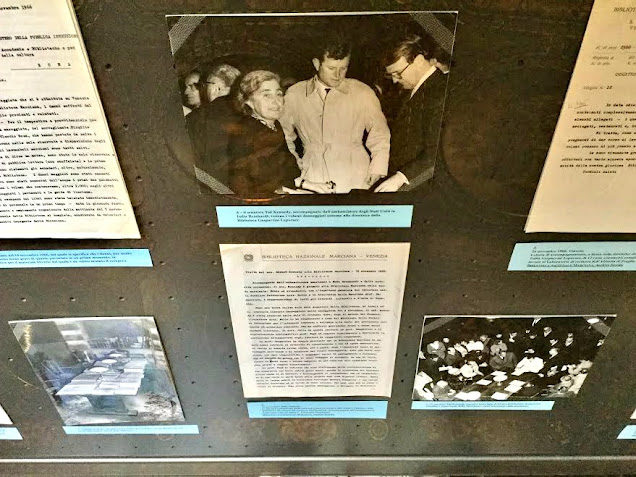 |
| Venice 1966 high water - Photo: Comune |
On November 4, 1966, Venice and Florence were hit by dramatic weather conditions: rain, wind, high tides, melting snow. The Arno River burst through its embankments in Florence, and the waters of the Venice lagoon rose up over more than 6 feet, inundating over 75% of the city. When the waters finally receded, both cities were without food, gas or electricity. Florence was covered with a thick oily mud, and 101 people had lost their lives.
For 22 hours, Venice was completely isolated from the rest of the planet. The ground floors of 90% of the city were flooded, trapping people in their homes. When it was over, thousands were left homeless and fled to the mainland, never to return, starting an insidious exodus out of the historic center.
Crucially, both Renaissance cities were treasure chests filled with precious works of art and rare manuscripts. Museums, galleries, churches, archives, and libraries containing many of mankind's highest achievements were damaged or destroyed.
 |
| Marciana Library |
Throughout the world the call for help went out, and the World of Art and Culture flew into action, forming committees and raising money. Many organizations formed in 1966 still exist today, like the American Save Venice, Inc., the French Committee to Safeguard Venice, and the British Venice in Peril Fund.
 |
| Ted Kennedy in Venice |
 |
| Marciana Library |
 |
| Ritorno in Piazza by Anna Zemella at Olivetti Store |
The projects, part of L'acqua e la Piazza, are promoted by FAI, the National Trust of Italy, in collaboration with Associazione Piazza San Marco and Venice IUAV Architecture University, and curated by We Are Here Venice. Instead of revisiting the flood, L'acqua e la Piazza tells a story about the relationship between Venetians, the water and Piazza San Marco.
Another nifty part of the project is a blue line on many Venetian businesses that marks how high in centimeters the 1966 water level reached, from +84 on the Caffè Quadri, to +101 on the Gritti Palace Hotel, to a whopping +143 on the Galleria Ravagnan.
 |
| Aquagranda at La Fenice |
 |
| Photo: Wolfgang Moroder |
"...When the acqua alta recedes, the shopkeepers of the Piazza are left with the repetitive, relentless task of cleaning up after the dirty water, already dreading the next tide. They anxiously follow the various forecasts, hoping that the wind will die down and that the bad weather will be less violent than predicted. Often -- in recent times I should say too often -- their hopes go unfulfilled as the water, slowly but inexorably, rises again, spreading to every corner of the Piazza.
All this creates psychological damage, which I consider even more harmful and insidious than the obvious economic damage. The frequent occurrence of these events renders the mind sluggish, as if the indomitably adaptive Venetian spirit has given way to an inert acceptance of what, instead, should never be accepted.
It must never be accepted that Piazza San Marco will continue to be flooded...
To see all the Aqua Granda events, go to Venezia Unica.
Cat Bauer
Venetian Cat - The Venice Blog

It must never be accepted that Piazza San Marco will continue to be flooded...
ReplyDelete